The news of Susan Alcorn's passing on January 31 resonates like the lingering overtones of her beloved pedal steel—a sound that hangs in the air. From those early moments spent beneath her mother's spinet piano in Allentown, Pennsylvania, pressing foot pedals in wonder, to her study and domestic adaptation of Chilean Nueva Canción, Alcorn's musical journey traced an arc through unexpected corners of the American musical tradition. Her death in Baltimore marks the end of a physical presence, but her explorations of her instrument continue to ripple, touching countless musicians who never imagined the pedal steel could speak in revolutionary tongues.
Born in 1953 in Allentown, Pennsylvania, Alcorn's musical path wound through numerous styles and forms. After twenty years performing in Texas country bands, she embarked on an extraordinary creative expedition that led to collaborations with luminaries such as Pauline Oliveros, Joe McPhee, and Mary Halvorson. Her work earned recognition from The Guardian, which dubbed Alcorn a “visionary,” and she received both the Baker Artist Award and the Instant Award in Improvised Music. She released more than a dozen critically acclaimed albums as a leader or co-leader,
With its complex system of pedals and knee levers, the pedal steel guitar might seem an unlikely vessel for experimental music. Yet in Alcorn's hands, the instrument transcended its origins, capable of microtonalities and textures that pushed beyond Western musical conventions. Alcorn maintained an unwavering commitment to subverting the expectations of her instrument while honoring its “soul,” an intangible aspect she discovered from playing country music and the blues. Her most recent album, Filament, recorded with Catherine Sikora, represented the culmination of a lifetime spent treating her instrument not as an object to be conquered but as a partner in sonic exploration—a relationship built on respect for both tradition and the unknown possibilities that lay ahead.
In January 2024, the Spotlight On podcast featured an enjoyable and generous conversation between Susan Alcorn and host Lawrence Peryer. The conversation was inspired by the release of her album with Septeto del Sur, CANTO. On the album, Susan explored Chilean folk music and Nueva Canción, which translates as “new song” and refers to an intertwined musical and leftist social movement important to pro-democracy organizations throughout Latin America. As you’ll hear, other topics discussed get much more biographical—Susan talks candidly about her early influences, her time playing country music, how she was drawn to the pedal steel guitar, and where she sees the instrument's future. It was a fantastic interview, and we’re publishing it here as a tribute to Susan Alcorn, a true innovator who will be missed. You can listen to the full conversation in the Spotlight On player below. The transcription has been edited for length and clarity.
Water Flowing Over Rocks
Lawrence Peryer: One of the things that struck me in your biography was the diversity of music you grew up with, even in your immediate household. It set the stage for your omnivorousness, your curiosity. Do you buy into the idea that being surrounded by diverse sounds prepares the ear to be open? I wonder if that organic process happened for you in the house you grew up in.
Susan Alcorn: My parents listened to big band music, encompassing everything from Duke Ellington and Ella Fitzgerald to The Harmonicats or Mickey Finn. I liked some classical music, and there were things I liked in the big band music, but I thought their music was old-fashioned, and by the time I became more interested, it was the sixties. There was a generation gap in our music. (laughter)
I got a transistor radio in fourth grade, which was a new thing. I started listening to the radio station—the Top 40, Petula Clark, and that sort of thing. That drew me into blues and folk music. And I liked psychedelic music. When you're a certain age, depending on your personality or psyche, everything is like a smorgasbord.
The two things that maybe headed me in this direction were when I first heard John Coltrane on an underground radio station, back when disc jockeys could choose whatever they wanted to play. I heard "Om (Closing Invocation)" from the album John Coltrane's His Greatest Years. I had to get that album back in Maitland, Florida, where I lived. I couldn't drive yet, so I had to get in a little canoe and paddle across a lake to dock where there was a record store nearby, order it, and get it a month later.
Then there was Freak Out! by Frank Zappa and the Mothers of Invention. With Freak Out!, he had a long list of influences in the liner notes. There was a quote by Edgar Varèse. "Oh man, I gotta check out Edgar Varèse!" I did the same thing, got in the boat, and listened to his piece "Amériques." I would take acid and listen to that record when my parents weren't around, jumping around and dancing.
Lawrence: It's fascinating how you had to physically journey to discover this music. How did these early listening experiences influence your approach to playing?
Susan: Those experiences taught me that music wasn't just about entertainment or technical skill but exploration and discovery. I started playing slide guitar and was heavily into blues. Seeing Muddy Waters perform live was a revelation. Something about the slide guitar’s physicality, the way you could make it speak and cry, connected with me. That led me to explore other musical traditions—Bulgarian, Hindustani, and African. Each tradition had its way of approaching pitch and expression, which influenced my later work with the pedal steel.
When I was about eighteen or nineteen, I made what felt like a radical decision—I completely turned away from electric instruments and bought a dobro. I was drawn to country rock, bluegrass, and what we now call classic country. There was something refreshingly direct about this music. It reminded me of sitting by a creek and watching the water flow over rocks. There was a natural, unforced quality to it that appealed to me after all the complexity of psychedelic music.
But I found myself wanting to do things on the dobro that were technically impossible, which led me to the pedal steel guitar. The pedal steel offers an amazing combination of precise mechanical control and infinite subtle variations. It’s like having an entire orchestra under your fingertips, but it’s also incredibly demanding. You’re using both hands, both feet, and your knees—your whole body becomes part of the instrument.
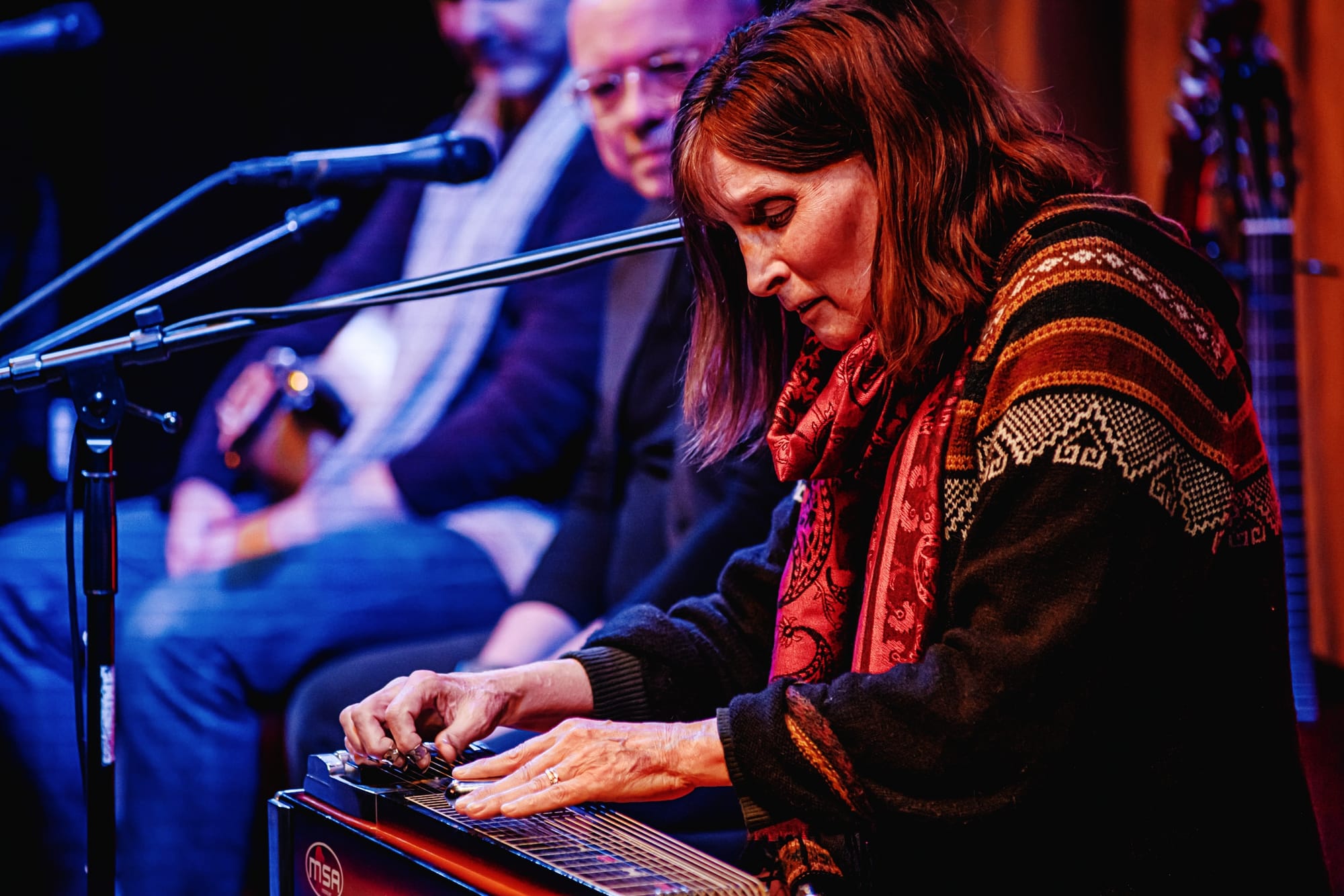
Lawrence: That simpler or organic tone of classic country seemed like it was in the air then, almost as a reaction to the bombast or excess of the late sixties and early seventies. I believe it emerged from the psychedelic movement when people returned to simpler music or quiet sounds after a turbulent period. Was that part of the experience for you?
Susan: I would say yes. That's what turned me on to country rock, to The Eagles, The Riders of the Purple Sage, that sort of thing. However, when I started playing country music, the people I was playing with, most of them my age or a few years older, never had that experience. They had grown up with that sort of music, and they knew everything going back to the 1940s, which I had to learn if I wanted to get gigs and play. That was like a whole different worldview. They probably didn't know who Poco or the Grateful Dead were, so it was a different scene for the most part. The Band and the beginning of Americana affected me.
Lawrence: Two things you mentioned, the Grateful Dead and Frank Zappa, were also springboards for me into all kinds of music. When I was around the same age as when you first heard Coltrane, I was reading an interview with one of the members of the Grateful Dead. They mentioned the John Coltrane record Africa Brass. I needed to check that out, as you do when you're exploring all these warrens of music. I bought it on cassette and brought it home, and the music was impenetrable to me. I had no context for this brass onslaught of music. It was so dense, but I figured there must be something to it if my heroes liked it. And I stuck with it. It's funny how your ears need to learn to hear it. That happened for me, and it unlocked a fifty-plus-year journey of music that's just incredible. But I couldn't hear it at first.
Susan: It's funny that you mention that because when I first heard it, I thought, "Wow, this is good." (laughter) But my introduction to that was psychedelic music and just being weird. Maybe I was weird and different from other people; different things affected me. I think, especially when you're young, it's your nervous system as much as your ears or brain that listens to and appreciates music. That's why the Beatles were so popular—it was just a different sound. The songs weren't necessarily all that different; there was just something about them; they just got into our bones.
This Double Life
Lawrence: You then spent twenty years playing country music professionally. How did that experience inform your later experimental work?
Susan: Those twenty years were like an intensive education in musical discipline and emotional directness. I moved to Texas in 1981 and found myself in this completely different musical world. The musicians I played with had grown up in the country tradition, going back to the 1940s. They knew every song, every arrangement, every nuance of the style. It was like learning a new language but also learning the culture that produced that language.
During the day, while everyone else was sleeping off the night's gig, I would be at home trying to learn Coltrane's "Naima" on the pedal steel. I was living this double life musically—playing traditional country music at night and exploring avant-garde jazz during the day. What's interesting is how these different musical languages started to inform each other. The emotional directness of country music, the harmonic sophistication of jazz, and the textural possibilities I discovered in experimental music all blended into my mind.
The country music scene taught me so much about precision and discipline. These musicians had incredibly high standards. You had to know every song, every key change, every subtle nuance that made a particular artist's version special. But more than that, you had to understand how to connect with an audience and make the music speak directly to people's experiences.
Lawrence: Did you take anything from seeing Muddy Waters perform live that's still with you? How does the music of the gut inform what you do today?
Susan: As musicians, we draw on all the wells. They're always with us in some way. With blues, there was a simplicity to it, which is great if you're trying to learn how to play. There's just something about that sound, like listening to old Charley Patton records. I was a teenager, and there was an emotional experience. There's a physical and an emotional thing to the blues; it's sad lyrics, and the same is true with country. There's a directness to it. And I think that directness stayed with me. I prefer direct ways of saying things with music.
Lawrence: How does that emphasis on emotional directness carry over into your experimental work?
Susan: That's really at the heart of what I do. Whether playing an arrangement of a Messiaen piece or improvising freely, I'm always trying to maintain that emotional directness I learned from country music and the blues. You can have all the technical facilities in the world, but if you're not reaching people emotionally, you're missing something essential.
I think about music as having different levels of communication. There's the personal level in country and blues—songs about individual experiences, heartbreak, loss, and joy. Then there's the societal level, like in Chilean Nueva Canción or Pete Seeger's music, addressing broader issues and collective experiences. And then there's the more abstract, spiritual level you find in composers like Messiaen or in free improvisation, where you're trying to tap into something beyond ordinary experience.
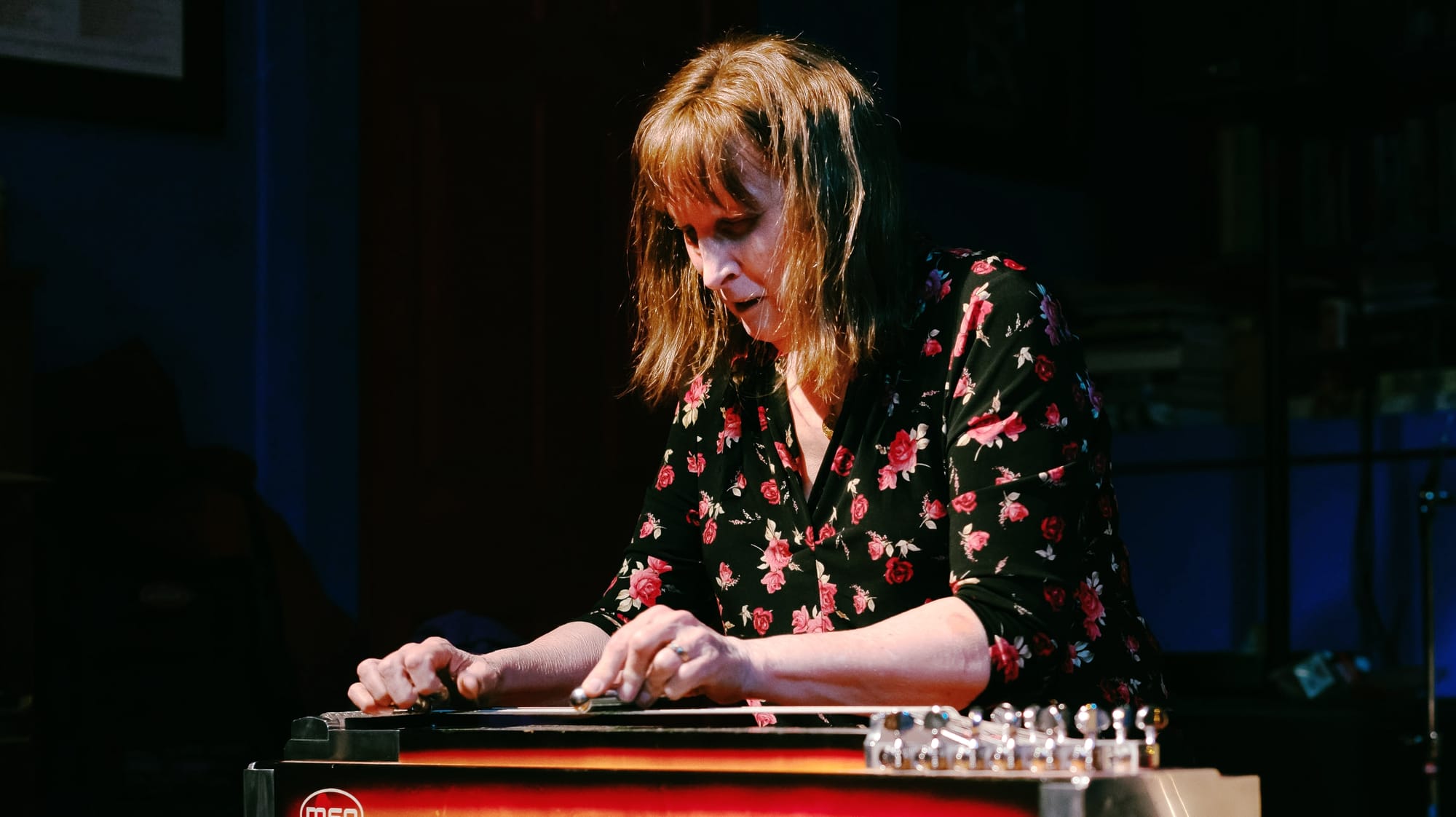
"That's What Sings to Me"
Lawrence: Can you talk about your compositional process? How do you approach creating new music?
Susan: My process usually starts with the pedal steel because that's what sings to me. Sometimes, I'll use a piano to avoid being limited by what's comfortable on the pedal steel, and I use Sibelius notation software to explore different ideas. However, the initial spark usually comes from sitting with the instrument and letting ideas emerge.
I often have vivid visual impressions when I write, almost like scenes from a movie or a dream. These impressions might be based on experiences or stories I’ve heard. For example, when I taught English as a second language, students told me about their experiences during the civil wars in Central America. Those stories stayed with me and eventually found their way into my music.
This visual aspect of composition comes from my early experiences with psychedelic music and art. It taught me to think about music not just as sound but as a complete sensory experience. When composing, I'm not just thinking about notes and harmonies—I'm thinking about textures, colors, movements, and emotional states.
Lawrence: The pedal steel has so much untapped potential. How do you see its future evolving?
Susan: The pedal steel is still in its infancy as an instrument. Most people associate it exclusively with country music, but it can do much more. Its ability to create fluid and sliding tones makes it perfect for microtonality. Its sustain and overtone characteristics give it an almost orchestral quality. And because it's such a physical instrument—you're using your whole body to play it—it creates this unique relationship between the player and the sound.
I've had the opportunity to explore some of these possibilities in ensemble settings. Last summer in Copenhagen, I played with two other pedal steel players: B.J. Cole, who played on Elton John's "Tiny Dancer," and Gustaf Ljunngren from Sweden. The sound of multiple pedal steels together is incredible when it works well. But it's challenging because the instrument is so complex and so sensitive.
That sensitivity is both its greatest strength and its greatest challenge. Every slight movement affects the tone, pitch, and expression. It’s like having an entire orchestra at your fingertips, but you must develop incredible control to use it effectively. After all these years, I’m still discovering new possibilities.
Lawrence: How has your approach to the instrument evolved?
Susan: Initially, I focused on mastering the technical aspects—learning all the pedal and knee lever combinations and developing precise control over pitch and timing. But over time, I've become more interested in exploring the subtle nuances of sound. The pedal steel can produce these beautiful microtonal variations, these subtle shifts in timbre that you can't get from any other instrument.
My work with Pauline Oliveros influenced this aspect of my playing. She taught me to listen not just to the notes I was playing but to the sound field—the overtones, the resonances, the way different frequencies interact. This has become central to my approach, especially in my more experimental work.
I've also become more interested in combining different musical traditions. For example, on my album, CANTO, I worked with Chilean musicians to explore the intersection of Nueva Canción with more experimental approaches. The pedal steel can adapt to many musical languages because it’s so flexible in pitch and expression.
The challenge is always to find new contexts for the instrument while respecting its heritage. I don't want to abandon its country music roots—that's part of its soul. But I want to show that it can speak other languages, too. It can whisper, scream, and sing in ways that may have never been heard before.

Like a Person Speaking in Central Park
Lawrence: That brings me to ask about the music on CANTO. Please tell me about your affinity and journey to the music you're exploring on this record.
Susan: The inspiration for that album was in 1973. I was in college and a left-wing activist. Seeing the Chilean coup on TV, just seeing the faces of these people wearing scarves, it's cold, and these men with black hair and dark beards—it just hit me. Then, in 2003, I was also a school teacher, teaching English as a second language. I wanted to go somewhere to improve my Spanish. I could have gone to Mexico, Nicaragua, or a hundred other places, but I chose Chile.
I was at a language school, and the owners were former exiles from the Pinochet dictatorship. While there, I bought a guitar to study Chilean folkloric music. I was already familiar with people like Mercedes Sosa, the Argentinian singer, and Violeta Parra, the originator of Nueva Canción in Chile. I became friends with a young woman who grew up in Venezuela because her parents were exiled. I was given a ticket for admission to this meeting of the survivors of the concentration camps. So I went to this meeting, and a few people got up and spoke. Before that, this choir sang Beethoven's "Ode to Joy." I started listening to more and more Nueva Canción music and incorporating that into my solo sets.
When Trump came to power [first term], my political instinct woke up again. I would play these pieces in my solo sets and talk about them. I would talk about what happened to Victor Jara when he was murdered. I would talk about where different tunes came from, and I think my solo sets became a little more political. I would end with a solo version of "A Song With the Birds," Pablo Casals's song. He was an exile from Spain after the Spanish Civil War, and that was the song he would play at the end of his performances and dedicate to refugees everywhere.
Most Americans, if you said Chile to them, would not have any idea about what happened there and their own government's role in it. It's fifty years later, and it's still non-existent in the educational realm of this country; we don't know about it as a people. It's not like Chile was alone in that. The same thing happened in Argentina, Brazil, Uruguay, and El Salvador, and it's been going on at least since the 1950s, and it's still going on. After the 2016 election, I got on my horse and started thinking about that sort of thing and bringing it to the music. I was just like a person speaking in Central Park. (makes noises like someone yelling through a bullhorn) (laughter)
I often have a vision when I write music, almost like a movie or a dream. It's a dreamy, shadowy visualization, like a soundtrack to a movie. These kinds of things influence most of the music I write in general. For instance, when I wrote one piece, it was also political. I was thinking of Mercedes Sosa back in the early 2000s. I was also reflecting on El Salvador, as students told me, "Oh yeah, one day someone came into our village and took most of the adults. I was hiding inside the house or under the bed." Those stories stuck with me.
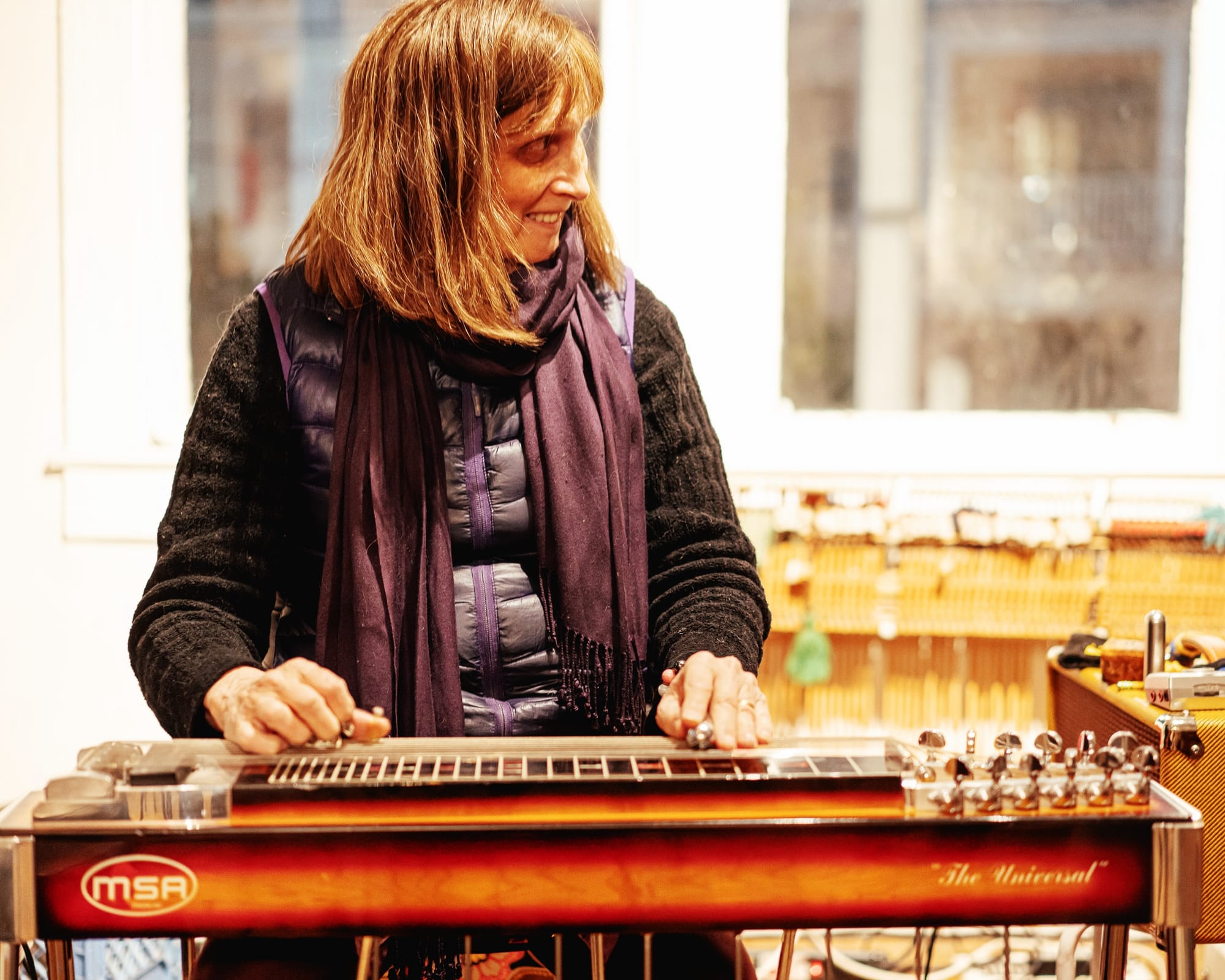
Lawrence: You've mentioned that few women play pedal steel, especially in experimental music. How has that affected your journey?
Susan: It's been challenging at times. People often say that my instrument is tied to the hip with country music. Many very good musicians play better than I do; they're virtuosos, but all within narrow confines. The pedal steel world is very male-dominated, and some players can dismiss anything that doesn't fit their idea of how the instrument should be played. I've had people tell me I don't know how to play, that I'm just faking it, that their five-year-old could do what I do. But I've never let that stop me from exploring the music I want to make.
There are not many women playing pedal steel guitar. One woman I know, Heather Leigh, plays experimental music in Scotland, originally from Houston. The female musicians I've identified with are Mary Halvorson, Ingrid Laubrock, and Janel Leppin, a cellist from D.C. But not many women are playing pedal steel, to begin with. I can count them on the fingers of one hand and chop off two fingers while doing it. Outside of country music, the number of women who play my instrument well is very small. Usually, I have to explain to people who have never seen it before.
But it's not just about gender—it's about approaching the instrument with an open mind. There's this tendency in any musical tradition to become very rigid about what's "correct" or "authentic." However, I believe traditions stay alive by evolving and incorporating new ideas. I’ve tried to do that with the pedal steel—honor its traditions while pushing its boundaries.
What keeps me excited about playing after all these years is that there's always something new to discover. The pedal steel is like a metaphor for musical exploration—it's an instrument that's constantly between notes, always in motion, always seeking new expressions. That's how I approach music—staying open to possibilities, finding connections between different traditions, and always being ready to discover something new.
You can learn more about Susan Alcorn at susanalcorn.net and find her amazing, eternal music on Bandcamp.
Check out more like this:
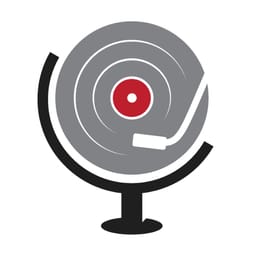 The TonearmMiguel Angel Bustamante
The TonearmMiguel Angel Bustamante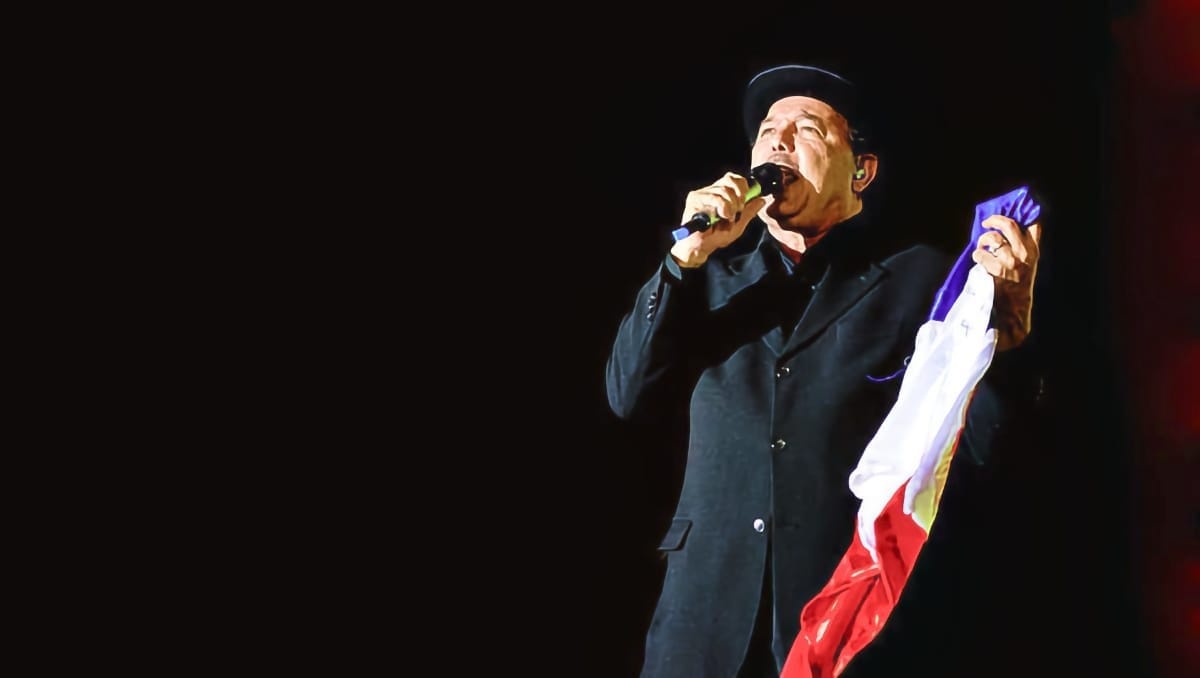
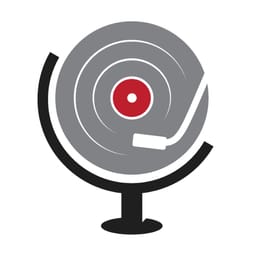 The TonearmLawrence Peryer
The TonearmLawrence Peryer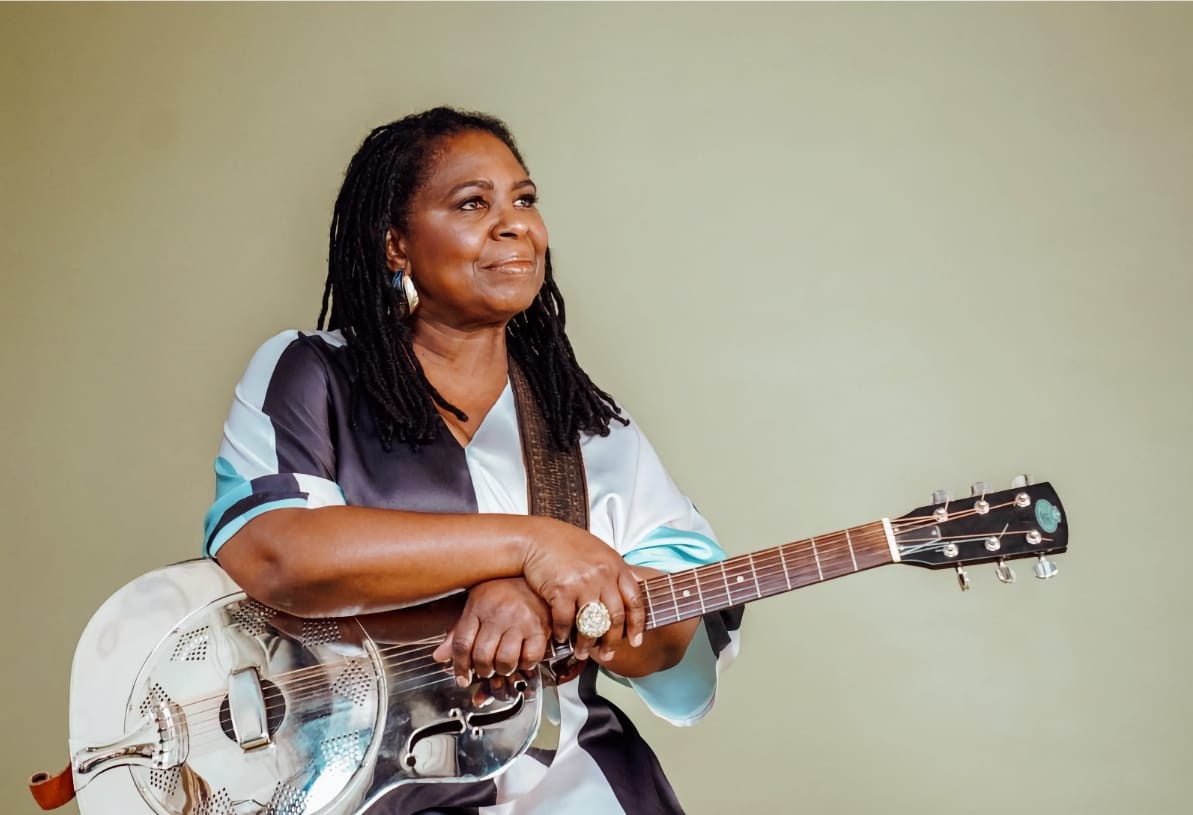



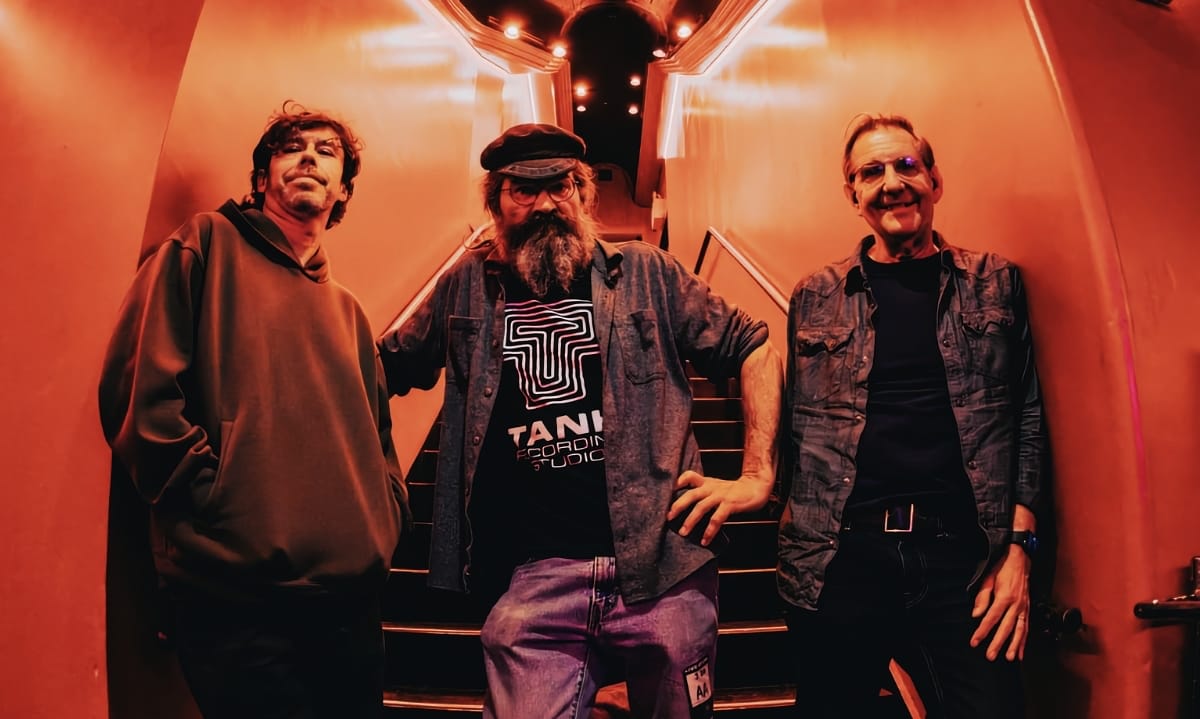

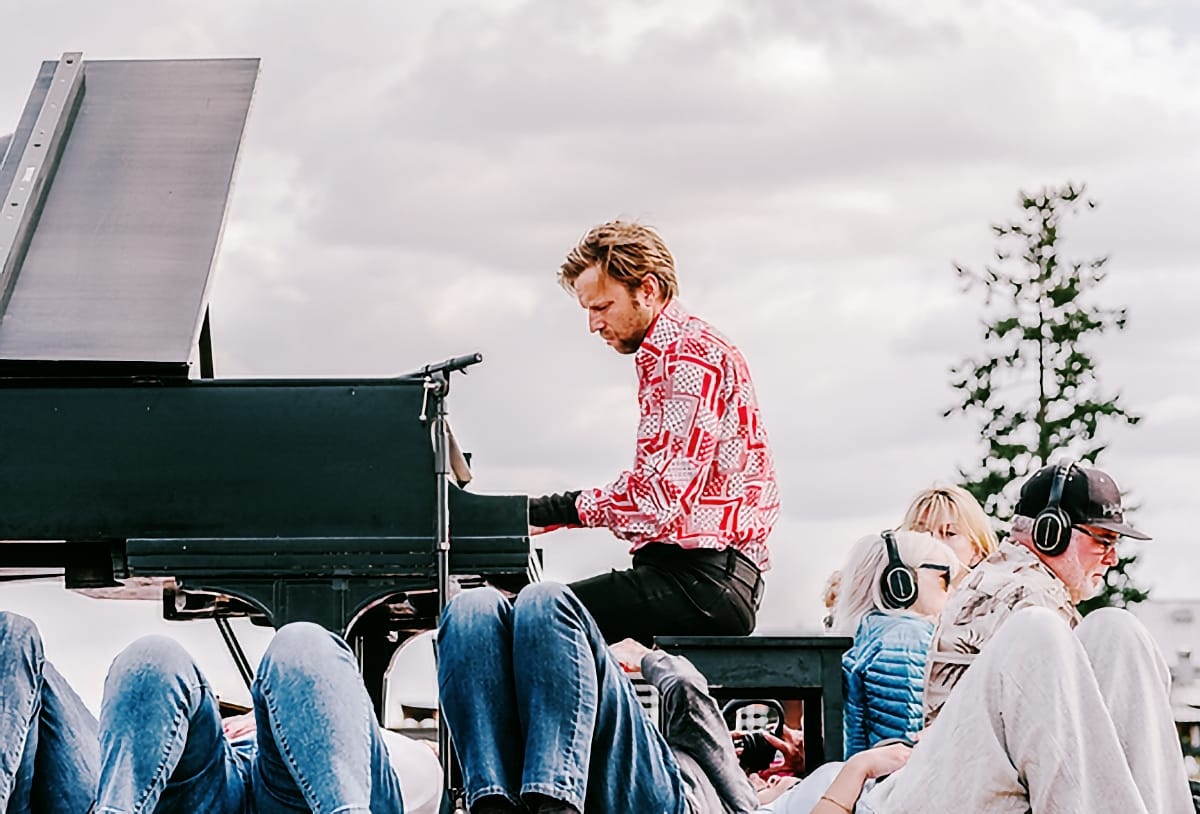
Comments